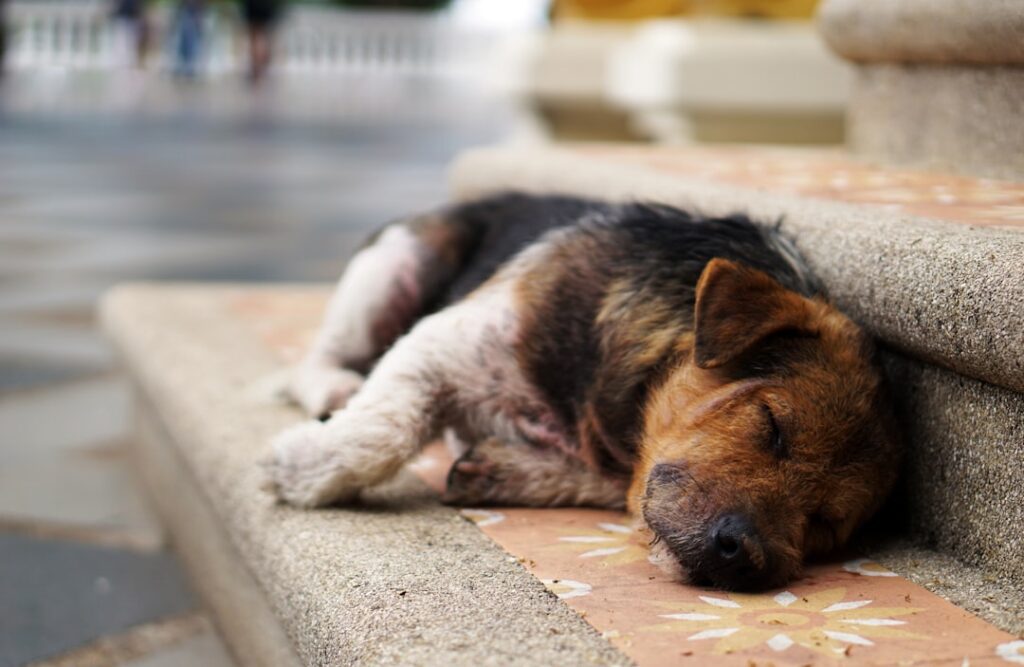Chubby frogs, also known as Asian painted frogs or bubble frogs, are a popular choice for amphibian enthusiasts due to their adorable appearance and relatively low maintenance requirements. These small, round-bodied frogs are native to Southeast Asia and are known for their docile nature, making them a great pet for beginners and experienced amphibian keepers alike. Chubby frogs come in a variety of colors, including shades of brown, gray, and green, with distinct patterns that resemble marbling or mottling. They are also known for their unique behavior of puffing up their bodies when feeling threatened, which adds to their charm and appeal as pets.
Chubby frogs are relatively easy to care for, making them a great choice for anyone looking to add a low-maintenance pet to their home. They are primarily nocturnal creatures, which means they are most active during the evening and night hours. This makes them an ideal pet for individuals who work during the day and are looking for a pet that they can observe and interact with in the evenings. Chubby frogs are also relatively long-lived for amphibians, with an average lifespan of 10-15 years in captivity when provided with proper care. With their charming appearance and easy-going nature, chubby frogs make a delightful addition to any amphibian enthusiast’s collection.
Key Takeaways
- Chubby frogs are small, easy-to-care-for amphibians that make great pets for beginners.
- Chubby frogs require a 10-gallon tank with a secure lid, substrate, and hiding spots for their habitat.
- Chubby frogs are insectivores and should be fed a diet of crickets, mealworms, and other small insects.
- Chubby frogs need a temperature range of 75-85°F and a humidity level of 60-80% in their habitat.
- Chubby frogs are not typically handled and prefer minimal human interaction, but they can be observed and enjoyed from a distance.
Housing and Habitat Requirements
When it comes to housing chubby frogs, it’s important to provide them with a suitable environment that mimics their natural habitat. A 10-gallon tank is typically sufficient for a pair of chubby frogs, with additional space needed for each additional frog. The tank should have a secure lid to prevent escape, as chubby frogs are known for their ability to squeeze through small openings. The substrate in the tank should be kept moist at all times, as chubby frogs require high humidity levels to thrive. Coconut fiber or sphagnum moss are popular choices for substrate, as they help retain moisture and create a comfortable environment for the frogs.
In addition to a suitable substrate, the tank should also include hiding spots such as cork bark or PVC pipes, as well as live or artificial plants to provide cover and enrichment for the frogs. It’s important to include a shallow water dish in the tank for the frogs to soak in, as chubby frogs absorb water through their skin and require regular access to water. The tank should also be equipped with a heat source to maintain the appropriate temperature range for chubby frogs, as well as a full-spectrum UVB light to support their overall health and well-being. By providing a spacious and enriching habitat for chubby frogs, owners can ensure that their pets thrive in captivity.
Feeding and Diet Recommendations
Chubby frogs are opportunistic feeders in the wild, consuming a variety of small insects and invertebrates. In captivity, they can be fed a diet of appropriately sized crickets, mealworms, waxworms, and other commercially available feeder insects. It’s important to provide a varied diet for chubby frogs to ensure that they receive all the necessary nutrients for optimal health. Dusting the feeder insects with a calcium supplement before feeding can help prevent nutritional deficiencies and support the frogs’ bone health.
Feeding chubby frogs should be done in the evening or at night, as this is when they are most active and likely to eat. It’s important to remove any uneaten insects from the tank after feeding to prevent them from bothering the frogs or causing stress. Overfeeding should also be avoided, as chubby frogs are prone to obesity if given too much food. By offering a balanced diet of appropriately sized feeder insects and monitoring their feeding habits, owners can ensure that their chubby frogs maintain a healthy weight and overall well-being.
Temperature and Humidity Needs
| Temperature | Humidity |
|---|---|
| 65-75°F (18-24°C) | 30-50% |
| 75-85°F (24-29°C) | 50-70% |
| 85-95°F (29-35°C) | 70-80% |
Maintaining the proper temperature and humidity levels is crucial for the health and well-being of chubby frogs. The ideal temperature range for chubby frogs is between 75-85°F (24-29°C) during the day, with a slight drop at night. This can be achieved by using a heat mat or ceramic heat emitter on one side of the tank, allowing the frogs to thermoregulate by moving between warmer and cooler areas as needed. It’s important to monitor the temperature regularly with a reliable thermometer to ensure that it remains within the appropriate range.
In addition to temperature, humidity is also a critical factor in caring for chubby frogs. The humidity level in the tank should be maintained at around 70-80% to mimic their natural habitat in Southeast Asia. This can be achieved by misting the tank with water daily and using a hygrometer to monitor humidity levels. Providing a moist substrate and a shallow water dish also helps maintain high humidity levels in the tank. By carefully monitoring and regulating temperature and humidity levels, owners can create an environment that supports the health and well-being of their chubby frogs.
Handling and Socialization
Chubby frogs are generally not considered to be a handling pet, as they are delicate creatures with sensitive skin. While they may tolerate being gently scooped up for maintenance purposes, such as tank cleaning or health checks, excessive handling can cause stress and potentially harm the frogs. It’s important to minimize handling as much as possible and allow chubby frogs to feel secure in their environment.
Instead of handling, owners can observe and interact with their chubby frogs by watching them explore their habitat and exhibit natural behaviors. Providing enrichment such as live plants, hiding spots, and climbing opportunities can encourage natural behaviors and keep the frogs stimulated. By creating a comfortable and enriching environment for chubby frogs, owners can enjoy observing their pets’ fascinating behaviors without causing unnecessary stress.
Health and Wellness Considerations

Like all pets, chubby frogs require regular care and attention to maintain their health and well-being. Regular tank maintenance, including cleaning the substrate, water dish, and tank decor, is essential for preventing bacterial or fungal growth that could harm the frogs. It’s also important to monitor the frogs’ eating habits, activity levels, and overall appearance for any signs of illness or distress.
If any health concerns arise, it’s important to seek veterinary care from a reptile or amphibian specialist who has experience treating chubby frogs. Common health issues in chubby frogs include skin infections, parasitic infestations, and metabolic bone disease. Providing a balanced diet, maintaining proper temperature and humidity levels, and practicing good hygiene can help prevent many health problems in chubby frogs.
In conclusion, chubby frogs are charming and low-maintenance pets that can bring joy to amphibian enthusiasts of all experience levels. By providing a suitable habitat, balanced diet, proper temperature and humidity levels, and minimal handling, owners can ensure that their chubby frogs thrive in captivity. With proper care and attention, chubby frogs can live long and healthy lives as beloved members of the family.
Additional Resources:
– “The Chubby Frog Care Guide” by Reptiles Magazine
– “Amphibians: Guidelines for Reptile & Amphibian Enthusiasts” by The Humane Society of the United States
– “Chubby Frogs: A Complete Guide to Care and Breeding” by Richard Bartlett Amphibians are a diverse group of animals that require specific care and attention. In “Amphibians: Guidelines for Reptile & Amphibian Enthusiasts” by The Humane Society of the United States, readers can learn about the proper housing, diet, and handling of amphibians to ensure their well-being in captivity. Additionally, “Chubby Frogs: A Complete Guide to Care and Breeding” by Richard Bartlett provides in-depth information on the specific care requirements and breeding techniques for chubby frogs, a popular amphibian species in the pet trade. Both resources offer valuable insights for reptile and amphibian enthusiasts looking to provide the best possible care for their amphibian companions.
If you’re interested in learning more about caring for chubby frogs, check out this article on Create and Shine. They provide helpful tips and advice for keeping chubby frogs happy and healthy in your home. Whether you’re a beginner or experienced frog owner, this article is a great resource for anyone looking to provide the best care for their chubby frog.
FAQs
What is a chubby frog?
A chubby frog, also known as the Asian painted frog or the banded bullfrog, is a species of frog native to Southeast Asia. It is known for its round, chubby appearance and distinctive coloration.
What does a chubby frog look like?
Chubby frogs are small, round-bodied frogs with smooth skin. They have a distinctive color pattern of dark brown or black bands on a light brown or tan background. Their eyes are large and protruding.
What is the natural habitat of chubby frogs?
Chubby frogs are found in a variety of habitats, including grasslands, marshes, and rice fields in Southeast Asia. They are often found near water sources such as ponds and streams.
What do chubby frogs eat?
Chubby frogs are carnivorous and primarily feed on insects such as crickets, mealworms, and small invertebrates. They are known to be voracious eaters and will consume a variety of prey items.
Are chubby frogs suitable as pets?
Chubby frogs are popular as pets due to their unique appearance and low maintenance requirements. They are relatively easy to care for and can thrive in a properly set up terrarium with the right environmental conditions.
Do chubby frogs require a specific environment to thrive?
Chubby frogs require a warm and humid environment with access to water for soaking. They also need hiding spots and a substrate that retains moisture, such as coconut fiber or moss. It is important to replicate their natural habitat as closely as possible.
Are chubby frogs endangered?
Chubby frogs are not currently listed as endangered, but their populations are threatened by habitat loss and collection for the pet trade. It is important to ensure that any chubby frogs kept as pets are obtained from reputable sources to prevent further impact on wild populations.


